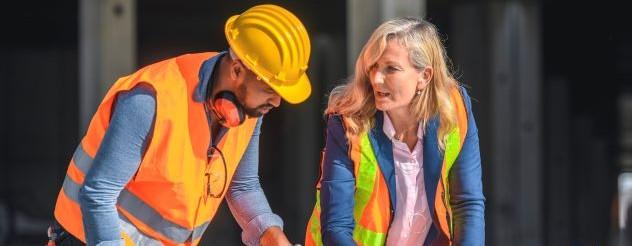
- Home
- Celebrating women building Victoria’s health infrastructure
International Women’s Day is celebrated annually on 8 March. This year the International Women's Day team is encouraging everyone to Break the Bias while the UN Women focus is on Equality today for a sustainable tomorrow.
In recognition of the day, we spoke to some of the inspiring women leading the state's biggest health infrastructure projects and programs of work here at the Victorian Health Building Authority (VHBA) about overcoming barriers and the bright future for women in infrastructure.
Deanne Leaver
Executive Director, Asset Development and Infrastructure Advisory Services
Deanne leads a multidisciplinary team of experts focused on environmental sustainability, property management, engineering services and asset management. She has worked in the public sector for more than 15 years and is on the board of a charity supporting mums and families in need.
What can you tell us about your career and current role?
'I’ve been fortunate to work on some really high profile and important projects that have seen lasting change. Some of the work I’m most proud of in my career is where there’s been a change in law or a new precedent set. For example providing land rights to traditional owners, mandating a new class of toilet for people with profound disabilities in the National Construction Code and establishing new asset management functions for the health sector. Our Asset Information Management System means we now know what assets we have and what condition they are in. Most recently, I’m incredibly proud of our support and response to the pandemic.
'VHBA has amazing people. Across all our teams we’ve delivered 1590 intensive and critical care beds and added 496 beds into the system during 2020-21. Our aerosol study highlights the importance of effective infection prevention and control strategies in health facilities to reduce the risk of transmission of COVID-19. The study was a key input into Victoria being one of the first governments to recognise aerosol transmission, ventilation assessments and upgrade works. Our representation has also been highly sought on numerous local and national taskforces and committees.
'I’m proud to lead passionate teams developing health projects that deliver tangible benefits to the community.'
What professional challenges have you experienced as a woman?
'I’ve faced the stereotypical challenges that all women face. Especially working in infrastructure where I am often one of few women – if not the only woman – at the table. I’ve been ignored, put down, been told I don’t have the skills and can’t do the job or project. There have been occasions where, despite being one of the more senior people in the room, I’ve been asked to take minutes.
'But I’m very fortunate at VHBA to have the support of leaders who call out negative behaviour. We’ve all experienced that time where we have an idea or a solution and it’s ignored only to have a male colleague bring it up 10 minutes later and be accepted. I’ve been in meetings where our senior leaders call it out and put the recognition back where it belongs – male or female.
'Good leaders also reinforce the importance of health and wellbeing and for me my gym routine is the first thing I drop when things get busy. I don’t like the word balance as it implies that everything is equal and, as a mum, I’d go crazy trying to achieve this and fail on all fronts. I prefer harmony – there will be times where work takes precedent and times where the kids take precedent.'
What improvements have you seen for women in the industry?
'In the past decade I’ve seen more female representation in senior roles of Secretary and Deputy Secretary. I’m a big believer in “you can’t be what you can’t see”.
'Flexibility has also increased, even before the pandemic, with improved sharing of loads. More male team members are taking parental leave – longer than a week or two and doing the kids activity runs. There’s also a shift in language with our male colleagues being more comfortable in sharing pride in their families at work.'
What further work could help Break the Bias?
'Many people don’t think there is a problem with bias, so we need to show where it is, what and why need change.
'I find it’s often an unconscious bias. For example, a couple of years ago we had a cartoonist attend and draw the outcomes of a Communities of Practice event. This event had a number of senior female and male leaders speak and present.
'We noticed the men were being drawn bigger than women, regardless of physical size or the importance of their role. When we pointed this out the artist was mortified, he hadn’t realised he’d been doing that, and he immediately fixed it to be more equal.'
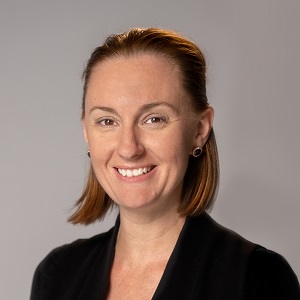
Deanne Leaver, Executive Director, Asset Development and Infrastructure Advisory Services, VHBA'Nowadays girls can see the pathways so they can chart their own course. Mentors, champions and advocates - and creating healthy relationships – are so important so they can continue to grow and progress.'
What advice would you give to younger self or women interested in joining the industry?
'The infrastructure industry is very high paced. I would tell my younger self to learn good habits early and learn to decompress. For those starting out I’ve found my mentors and champions invaluable. Being able to seek multiple views and to test things, make sense of the political dynamics and to draw advice. My other key piece of advice is simply to never give up.'
Samantha Morgan
Project Director, Pathway to 144 Mental Health Beds (Mental Health Beds Expansion Program)
Responding to key recommendations from the Royal Commission into Victoria’s Mental Health System, Samantha is leading a complex multi-site project to deliver acute mental health beds across the state.
What can you tell us about your current role?
'The Royal Commission has enabled a once-in-a-generation investment in mental health. Our role is to deliver the buildings that have been informed by co-design – where consumers, families and staff have been involved in the design process.
'It’s amazing for the project team to see this project transform from designs on paper to the buildings coming out of the ground. And to see the realisation of design in safe and therapeutic environment, individual bedrooms, staff and consumer amenity including important features like open green spaces and being able to see the sky above in multiple courtyards.'
What challenges have you experienced as a woman in the industry?
'I’ve been working in major projects for five years and it is something I’m really passionate about. The challenges of large-scale delivery projects are the same for everyone in the business and provide lots of experience and opportunity to learn and develop.'

Samantha Morgan, Project Director, Pathway to 144 Mental Health Beds, VHBA‘In my time in government, working in infrastructure delivery, I have seen increasing representation of women in all aspects of the sector and expect this to continue as women move into more senior and leaderships roles.'
What improvements have you seen?
'I can see increasing numbers of women in the construction industry – in government, in our consultants' groups and importantly in our construction partners. I can see a real effort and commitment to grow representation. I think over time as more women move into senior and specialist roles, and lead visibly from the front, this will provide opportunity for all people to see more diversity and what this brings to major project delivery.
'We want all staff to be able to see themselves in the industry at all levels.'
What advice would you give to your younger self?
'Always be enthusiastic, put your hand up for everything and try things out of your comfort zone – they can give the best opportunities of your career.'
Dijana Dragovic
Director Projects, Health Capital Program
Dijana oversees several large projects and programs at VHBA and has previously managed construction projects with the Department of Justice as well as projects in war torn countries around the world.
What challenges have you experienced as a woman leading such diverse projects?
'In some countries that I have worked in, such as Iraq and Sudan, the cultures are quite conservative and being a senior woman in the field can pose challenges. In Australia, the infrastructure sector has been predominantly male. This was particularly evident when I started in this country nearly a decade ago when I would rarely see women among the builders and contractors I engaged with. This is now slowly changing.'
What improvements have you seen for women in recent years?
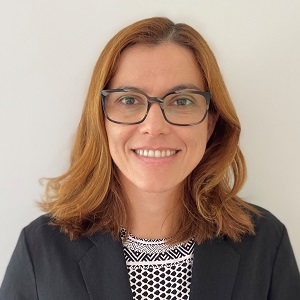
Dijana Dragovic, Director Projects, Health Capital Program, VHBA'There are more women working in the industry, not only for the government but also with contractors. This has come about through specialised apprenticeships encouraging women from diverse communities to join their team.'
'Recently government introduced a Building Equality Policy which aims to increase female participation in the construction industry by introducing mandated targets for women in trade, non-trade and managerial roles on public construction projects.
'In the public sector there has also been a push for gender diversity across the board which helps, but I also think that capable women have found their voice and way to impose themselves over years, with their skill and knowledge. Women are also more interested in studying engineering which was not always the case.'
What further work could help Break the Bias and create a more sustainable future for women and girls?
'There is still more work to be done, especially to see women in executive leadership positions. Leaders set the culture of an organisation and a more diverse leadership group are more likely to encourage policies to see a diverse organisation.'
What advice would you give to younger self or women interested in joining the industry?
'Be persistent. Keep learning. When you are knowledgeable then you can speak with confidence and authority.'
Lisa Antonio
Director, Community Hospital Program
Lisa leads the delivery of community hospitals and has previously delivered projects with the Department of Justice.
What types of projects have you worked on throughout your career?
'I’ve previously worked on correctional, secure and transitional facilities for the justice sector and I’m now working on a $675 million investment to deliver 10 community hospitals in growth areas across Victoria.'
What challenges have you experienced as a woman in the industry?
'I’ve always worked in male-dominated environments - first correctional, then construction. When I first started working on construction sites, it was a novelty as there weren’t many women wearing a hard hat and steel capped boots. There was a lot of pre-judgement that women didn’t know much about the construction industry, and it wasn’t a place for them. Back then, I’m sure people thought I attended meetings to take the minutes. Attitudes have certainly changed now.'
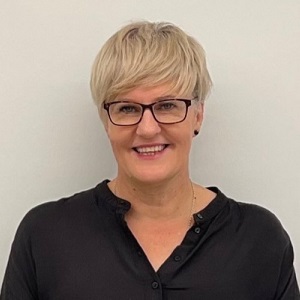
Lisa Antonio, Director, Community Hospital Program, VHBA'It’s common to see women not only working in the industry but with leadership roles, driving outcomes. Those outdated pre-conceived ideas aren’t as common anymore.'
'As an industry, we’ve come a long way for opening pathways for women and having leadership roles in the construction industry. Although I still believe we have a long way to go but there has been growth and I’m excited about the future for young women considering a career in the infrastructure sector.'
Why should women consider working in infrastructure?
'Women generally handle multi-tasking well, and as every day is different in this industry, there is a constant need to delegate and prioritise. It’s challenging but it also brings great reward when you’re able to manage risks or solve problems to deliver something tangible and provide benefits to the community.'
How are you empowering women in the industry?
'I mentor women and give them a forum to talk through challenges. With my leadership style, I believe I empower women to be more confident and explore opportunities to improve and develop their skills. There are great opportunities out there for women, sometimes the biggest hurdle for women is their lack of belief in their capabilities. I like to support them and try to bring the best out of them, so they can put themselves forward for opportunities. A measure of my success as a leader is the people, including women, who can help develop into the future leaders of tomorrow.'
Sally Delany
Manager, Design Services
Sally provides advice across a wide range of VHBA projects, from master planning and feasibility into delivery.
Why did you choose a career in infrastructure?
'My interest in architecture was sparked by my love for art, design and mathematics. I’ve been in government for five years but prior to that, I worked as an architect in the private sector for 25 years – in Melbourne, Bangkok and Paris. I also ran my own business for five years when my children were young.'
What are the benefits of having women in leadership roles?
'Construction has traditionally been a male-dominated industry and having women in leadership can offer role modelling for other women, showing it’s about choosing the best person for the job rather than it being based on gender.'
Sally Delany, Manager, Design Services, VHBA'Having women in leadership positions provides a more balanced voice and a different perspective across our work.'
What has been your proudest achievement in your career to date?
'Working on health infrastructure projects is very rewarding as there are always complex problems to solve. The work we do impacts many people’s lives, including the communities they are built in, and it’s very satisfying to be part of this. I strive to realise innovations within these projects, moving away from business as usual, and it’s great to see this imbedded in projects.'
Why are female voices important in designing health infrastructure?
'Women make up 50 per cent of the population. They are often underrepresented in the design of those spaces, and women, of all ages bring a different and relevant perspective.'
What career opportunities would you like to see for women?
'I would like to see the same career opportunities for men and women. It was again reported on recently that men are still earning more than women in Australia for the same roles. This is not a great incentive for women to tackle some careers where they do not feel supported.'
State of play
At the Victorian Health Building Authority, we have $9.21 billion of projects in planning and delivery and $16.6 billion in managed assets. Our pipeline of over 127 projects will support thousands of jobs at the peak of construction – supporting Victoria’s economic recovery for years to come. We have 294 staff, with more than half identifying as female and 41 per cent in team leadership roles.
Under Victoria’s Building Equality Policy, suppliers must meet the following minimum onsite gender equality targets:
- trade covered labour: women are required to perform at least 3% of the contract works’ total estimated labour hours for each trade position
- non-trade Construction Award covered labour: women are required to perform at least 7% of the contract works’ total estimated labour hours for each non-trade Construction Award covered labour position
- management/supervisory and specialist labour (staff): women are required to perform at least 35% of the contract works’ total estimated labour hours for each staff position
This policy was introduced January 2022, with a transitional period until January 2024.
State of change
The latest CommSec State of the States report showed construction work in Victoria is 21.9 per cent above its decade average. More women are active in the Victorian labour market now than in the past, but they make up only 2 per cent of the workers in Australian construction.
Victoria's Women in Construction Strategy aims to attract, recruit and retain women in the industry. The Victorian Government has several other initiatives in progress:
- Gender equality and women's leadership
- Victoria's Gender Equality Strategy
- Women and Girls in STEM: Increasing participation in science, technology, engineering and mathematics.
Work with us
The Victorian Health Building Authority is responsible for the planning, delivery and oversight of Victoria’s health infrastructure.
Our critical work includes:
- managing the planning and delivery of new health infrastructure projects, including public hospitals, community health services, residential aged care, mental health facilities and ambulance branches
- community and stakeholder engagement
- developing best practice guidelines for managing health infrastructure
- upgrading and managing state-wide medical and engineering equipment.
If you are passionate about public health and interested in contributing to the planning, design and delivery of world-class health infrastructure, then we want to hear from you. Learn more about our organisation via our careers page and follow VHBA on LinkedIn for job ads and updates.
Related content

06 March 2021
Women in leadership: International Women’s Day 2021
For International Women’s Day, we spoke to senior female leaders across the building industry in construction, engineering and architecture about gender equality.
01 October 2021
Celebrating International Day of Older Persons 2021
Pam Saunders, Director of Nursing at Central Highlands Rural Health, discusses her role and dementia friendly design.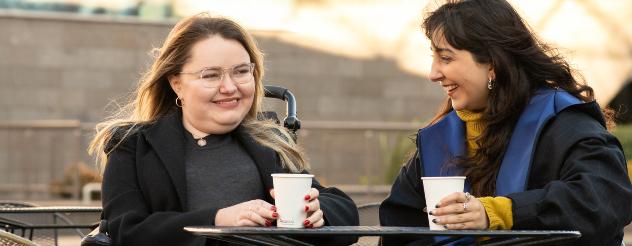
03 December 2020
International Day of People with Disability 2020
Today is International Day of People with Disability, an opportunity to promote public awareness, understanding and acceptance of people with a disability.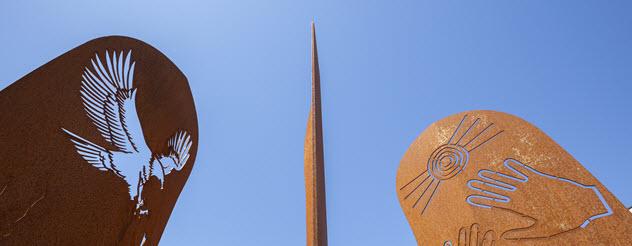
07 August 2020



